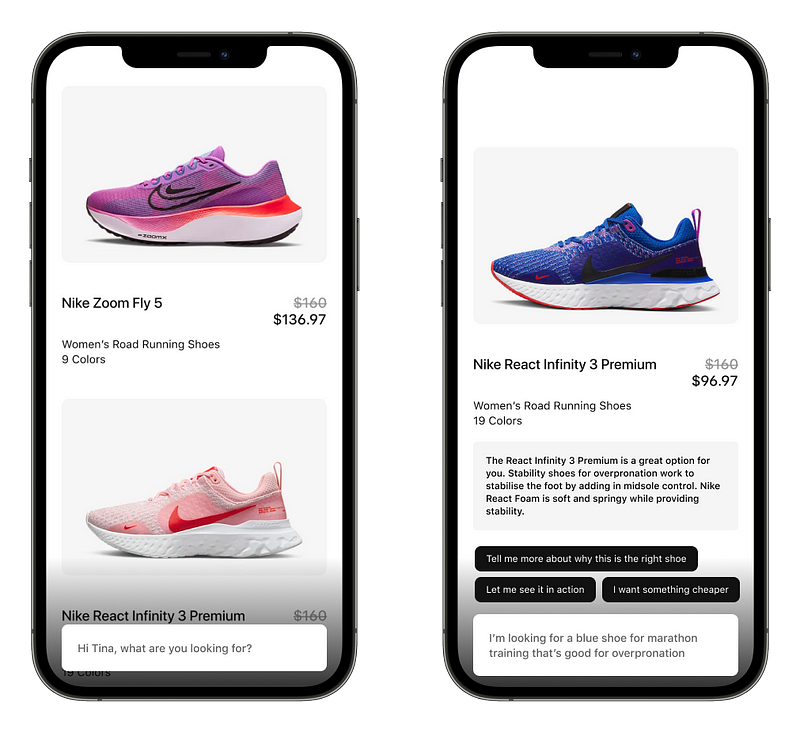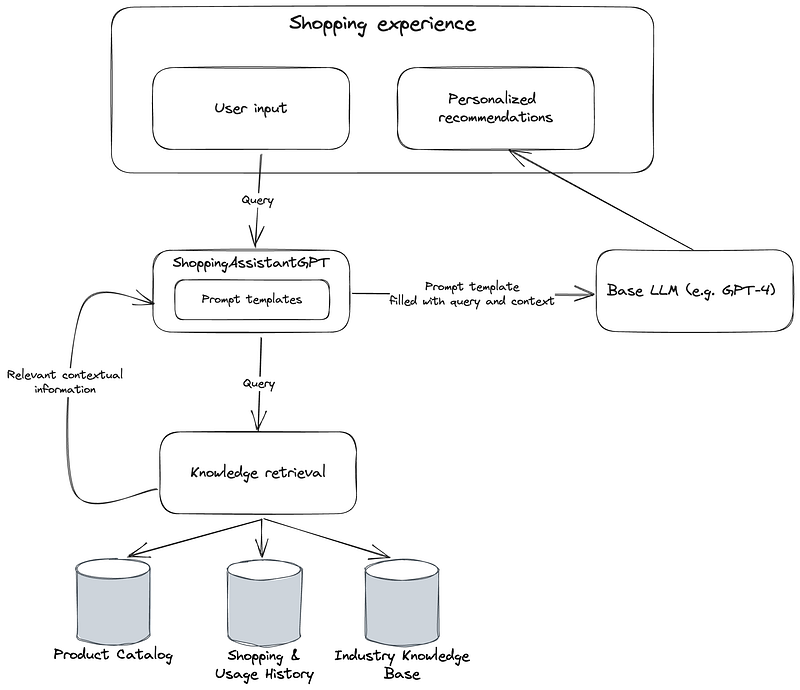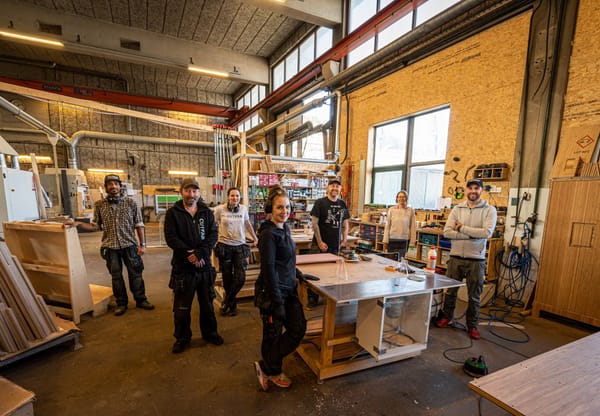What could online shopping experiences transformed by LLMs look like today?
The line between e-commerce and AI is blurring. Build AI apps at the speed of thought with Databutton, LLMs, and RAG.

We’ve seen technological revolutions reshape the commerce landscape before. The invention of the internet offered unprecedented opportunities — distribution, efficiency, personalization, and more. Today, as we stand at the threshold of another such revolution, imagine a future where the line between e-commerce and AI blurs, creating a shopping experience tailored to each individual’s whims and desires. This future, as we envision, is driven by Large Language Models (LLMs).
Base LLMs, such as OpenAI’s GPT-4, offer a sophisticated ability to understand and generate human language, with possibilities that were only dreams until recently. Incredibly, it’s already possible to build a lot of game changing experiences today combining base LLMs, prompt engineering, and retrieval augmented generation. This is an opportunity we’re attacking with Databutton, the workspace for creating AI applications.
The starting point: natural language shopping
We cover the technical design pattern in the next section, but let me start out with the customer experience.
Imagine a scenario where an online shopper, Alice, is seeking a dress for her friend’s wedding. In today’s e-commerce platforms, Alice would spend hours scrolling through countless options, filtering by color, price, material, and more, still unsure if she found the best match for her needs.
In an LLM-driven future, Alice simply describes what she’s looking for: “I need an elegant navy blue, knee-length cocktail dress, ideal for a summer garden wedding. My budget is around $200.” In moments, the AI generates a curated list of options and information, personalized to Alice’s preferences. It understands context, nuance, and even the subtle connotations of ‘elegance’ and ‘summer garden wedding’.
There are some huge benefits of base LLMs, as demonstrated by the rapid growth of ChatGPT, which reached 100 million monthly active users just two months after launch, making it the fastest-growing consumer application in history.
Breaking Down Barriers
Language barriers have always been a challenge for global e-commerce platforms. With LLMs, businesses can instantly understand and communicate with customers in their native language, opening doors to new markets and ensuring a seamless shopping experience for users worldwide.
Conversational Commerce
LLMs enable conversational commerce at an unprecedented level. Customers can engage in interactive dialogues, ask questions, express doubts, or get recommendations — just as they would do with a knowledgeable sales assistant in a physical store.
Natural language shopping tailored for your domain and business
The interplay of base Large Language Models (LLMs), prompt engineering, retrieval augmented generation, and a different databases (e.g. product catalog) can create a uniquely personalized and intuitive shopping experience.
The base LLM trained on a diverse range of text, provides a robust foundation for understanding and generating natural language.
Prompt engineering
An LLM’s output can be further tailored and refined through prompt engineering, which allows us to guide the LLM’s responses to align with specific use cases, such as understanding a shopper’s specific request or offering product recommendations.
Retrieval augmented generation (RAG)
RAG comes into play by enabling the LLM to reference databases — in this case, a product catalog, customer history, and more — during its response generation process. This allows it to pull in real-time, context-specific information about product details, availability, customer preferences, and more.
ShoppingAssistantGPT
Together, these elements combine to transform static catalogs and databases into a dynamic, interactive shopping assistant, ShoppingAssistantGPT, that can converse naturally with customers, understand their individual needs, and offer personalized, up-to-date product recommendations. It’s the equivalent of having a knowledgeable, attentive salesperson assisting each customer individually, but in an online setting and at scale.

Wondering what capabilities ShoppingAssistantGPT possesses? Here are a few examples:
- Best laptop for graphic design under $1500: A customer inquiry like this would prompt an LLM, enriched with domain expertise, to understand the specific demands of graphic design, such as a high-resolution display, a powerful graphics card, and ample RAM. Based on a product catalog and trusted online reviews, the LLM would recommend laptops that meet these requirements.
- DSLR camera purchase: Customers considering a DSLR camera could receive a prompt suggesting they also consider a tripod, as these two products often complement each other.
- Attire for a Hawaiian party: When a customer requests “A cool shirt to wear to a Hawaiian party this Saturday,” recommendations can be based on available sizes, past purchase history, and knowledge of delivery time frames.
The future is here, with Databutton
Databutton gives you the tools necessary to create LLM-driven intelligence, such as your very own ShoppingAssistantGPT. Join us as we embrace this future with tons of enthusiasm! Sign up, join our Discord, and be a design partner to share your insights and expertise so we can refine the Databutton product experience.
The e-commerce revolution has only just begun. Let’s utilize LLMs and Databutton to build a future where shopping transcends mere transactions, evolving into a personalized journey crafted by the powerful combination of AI and human imagination.





